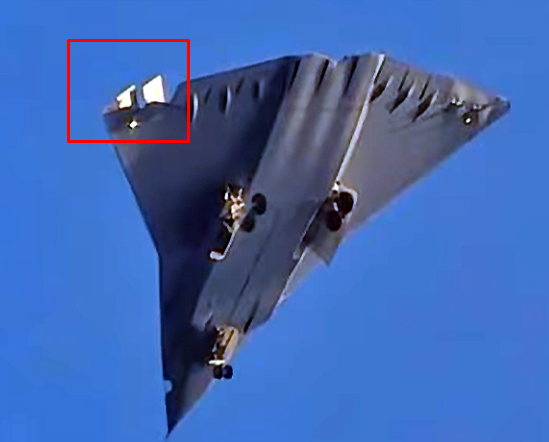I have been thinking about this platform and the strategic situation between the U.S. and China a lot recently, particularly as the F-47 seems to be going with a totally different design approach.
My thoughts are that J-36 is a heavy interceptor designed to engage large multi engined U.S. aircraft, most especially bombers.
One of the issues that China would have isolating Taiwan, or really in any major operation that involved a surface force, is that the U.S. can smoother them with cruise missiles from CONUS based bombers regardless of how successful their attacks on regional U.S. bases are. B-21 just makes this worse; now perhaps a bomber can dump glide ordnance without an escort.
J-20 does not solve this problem. It lacks range, and while it can be refueled, the problem is squeezing a Y-20 through the Miyakos or Batanes when there could be 5th gen jump jets, long ranged SAMs, or A2A armed bombers operating there even if you trash every airbase and carrier in the region.
IMO, J-36 is intended to be able to penetrate through hostile 1st chain airspace and then independently set up a BARCAP east of Taiwan to interdict not just AWACS and tankers, but most especially bombers. It needs medium ranged weapons to potentially fight its way in and out, but its primary capability is long ranged sensors and missiles so it can find annd prosecute its own targets without supporting assets (I am guessing stealth HALE UAVs would be part of this process too).
This differs dramatically from US requirements: the mission there is to kill other fighters, but at much longer patrol ranges than the F-22 and much higher performance than the F-35, as well as be able to coordinate with UAVs. Its target set is not large or unmaneuverable; it engages at closer range. To the extent that large weapons are needed for large aircraft, they will be carried by F-15s or maybe even a select number of B-21s. So F-47s payload is strictly smaller BVR AAMs and nothing else.
This makes J-36 more of a heavy fighter/interceptor for use against bombers, in the tradition of WWII twin engined fighters or perhaps more accurately Soviet PVO heavy interceptors like Su-15 or MiG-25. F-47 is a long ranged air superiority machine, more akin to P-51: let’s take a fighter and get more range out of it. Only in this case the adaptive engines are the secret sauce rather than an extra fuel tank.
Considering we do not yet know what the actual characteristics of F-47 is actually like -- i.e.: we know less about its actual final physical characteristics than we do about the Shenyang J-50/J-XDS -- I think caution about making big calls of its role is prudent.
That said, for J-36 it is certainly the case that it is a larger, longer ranged, tactical combat aircraft for the air to air role than basically any other such aircraft that had come before it (or even in history).
From an operational level of war perspective I think you are not wrong -- J-36 is essentially meant to project and contest air superiority/air control at very long ranges, to near 2nd island chain distances.
The end goal of that of course will be to try and defeat the total system of systems air warfare capability of the opfor, and naturally the end-stage goals would be to defeat major force multipliers (tankers, AEW&C, etc) and fires launch platforms (bombers) which will enable the PLA project its own air power more effectively and protect its own air power nodes (air bases, command/control, IADS, etc) from enemy fires.
But to be able to reach that end goal, the J-36 will also need to have the capability to contend and defeat the significant opposing BARCAP and air superiority fighters, including everything from F-47s, F-35s, F-22s, UCAVs/CCAs and everything else. (This is very much similar to how some have described J-20 as an "interceptor" intended to target AEW&C and tankers, yet have omitted to think about how the J-20 would contend with the fighter BARCAP and escorts such AEW&C and tankers would have)
Putting it another way, J-36s prosecuting and targeting bombers, AEW&C, tankers et al, is the "easier" part of their mission, but the more challenging part, and the part that they are more oriented towards, is to contest and defeat opposing air superiority systems and platforms at long range.
So I see J-36's role as similar to what you described for F-47, except with an even greater emphasis on range and size/payload and a greater focus on system of systems approaches.



www.bilibili.com
